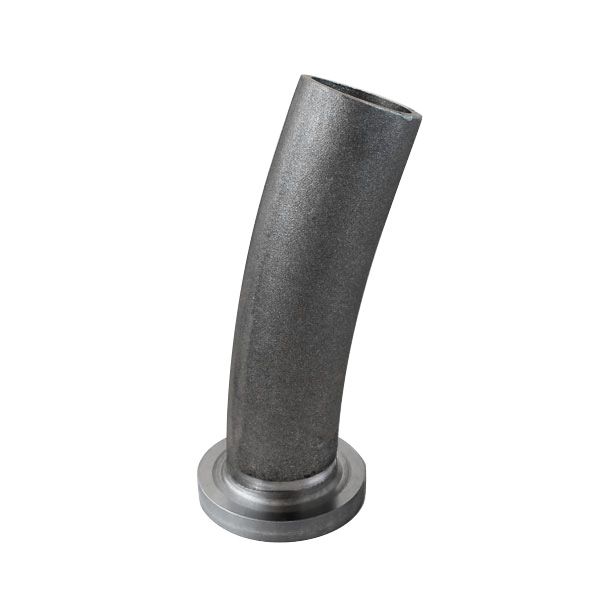One piece cast aluminum intake manifold designed for 56mm carburetor users.
This cast piece has a 20 degree bend in the casting eliminating the need to fabricate a curved manifold from a billet aluminum blank. One casting virtually eliminates the need to build angled adaptor blocks or transitions from a down-angled port back to a horizontal plane.
The carburetor-end of the cast manifold enters at 56mm or a 2.205" diameter internal opening.
The manifold tapers in diameter from the 2.205" diameter down to 1.8" diameter at the exit face where the manifold meets the intake port or transition block.
We have also machined this incoming end of the manifold to accept the hose adaptor and clamps which are typical of mounting the VM 56mm methanol carburetors. (Enquire about versions of the manifold in which intake ends have not been machined for mounting clamps.)
The manifold is 9.5" long and the extra long length allows for options in tuned intake track lengths.
The 9.5" overall length can be shortened by 2" without effecting the internal taper allowing you to cut the manifold back in length to 7.5" (more typical of earlier billet manifolds).
The flange at the block end of the manifold is a 4" diameter allowing for nearly any bolt pattern or number of bolt holes. The flange is about 1/2" thick for substantial strength and rigidity. We have machined the mounting face or gasket surface flat and it is ready to seal to your engine block.
This aluminum casting is thick, strong, and lightweight. It is a universal design and will allow for modifications to meet your needs. It is a fully weldable aluminum alloy.
The small end of the manifold can be port matched or enlarged by hand-grinding or re-machining by the user.
Length: 9.5"
Curvature: 20 Deg
Enter Internal Dia: 2.205"
Exit Internal Dia: 1.8"
Wall thickness: 1/4" - 3/8"@ mounting flange
Flange Dia: 4"
Flange Thickness: 1/2"
Why a curved manifold?
Curves make torque. The combination of the taper and the curve in the manifold increase the velocity of the incoming fuel/air charge while lining up port geometry.
Top end horsepower is maintained with high air-flow, fuel and air remain atomized due to the high velocity generated by the taper and the engine generates low-end torque creating a broad power band pulling down to very low RPM's.
website by Imagine This! Marketing Group
To Top

